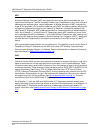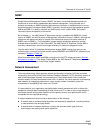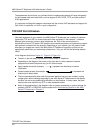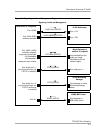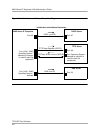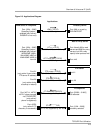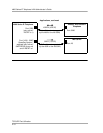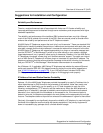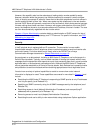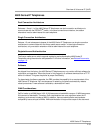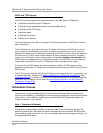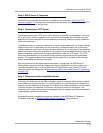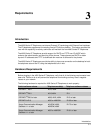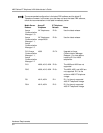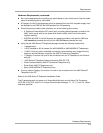
4600 Series IP Telephone LAN Administrator’s Guide
Suggestions for Installation and Configuration
2-12
However, this capability also has the advantage of making station number portability easier.
Assume a situation where the company has multiple locations (for example, London and New
York), all sharing a corporate IP network. Users want to take their telephones from their offices in
London and bring them to New York. When users power up their telephones in the new location,
the local DHCP server will generally route them to the local switch, which denies service because
it knows nothing about these new users. However, with proper administration of the local DHCP
server, the telephone knows to try a second media server IP address, this one in London. The user
can then be automatically registered with the London switch.
Chapter 4, Server Administration
contains details on administration of DHCP servers for lists of
alternate media servers, router/gateways, and TFTP servers. For specific information, see DNS
Addressing, on page 4-33.
Security 2
In VoIP, physical wire is replaced with an IP connection. The connection is more mobile.
Unauthorized relocation of the IP telephone allows unauthorized users to send and receive calls
as the valid owner. For further details on toll fraud, refer to the DEFINITY
®
or Avaya
Communication Manager documents in Related Documents, on page 1-6
.
Any equipment on a data network, including a 4600 Series IP Telephone, can be the target of a
Denial of Service attack. Typically, such an attack consists of flooding the network with so many
messages that the equipment either spends so much time processing them that it cannot process
legitimate tasks, or the equipment overloads and fails. Although the 4600 Series IP Telephones
cannot guarantee resistance to all Denial of Service attacks, each Release has increasing checks
and protections to resist such attacks while maintaining appropriate service to legitimate users.
You also have a variety of optional capabilities to restrict or remove how crucial network
information is displayed or used. These capabilities are covered in more detail in Chapter 4
, and
include:
■ Restricting the 4600 Series IP Telephone’s responding to SNMP queries to only IP addresses
on a list you specify (as of Release 2.0).
■ Specifying an SNMP community string for all SNMP messages sent by the telephone (as of
Release 2.0).
■ Restricting access to Local (dialpad) Administration Procedures (such as specifying IP
addresses) with a password (as of Release 1.8).
■ Removing access to most Local (dialpad) Administration Procedures.
■ Restricting the end user’s ability to view network data using a telephone Options application.



